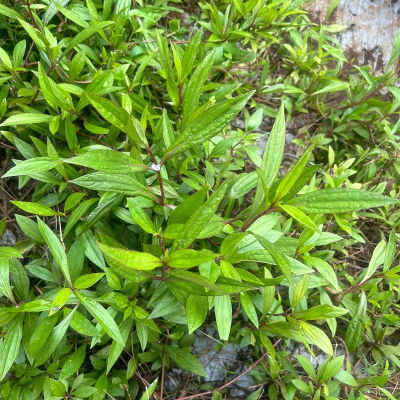Ayapana triplinervis (Vahl) R.M. King & H. Rob
Synonyms : E. ayapana Vent. , Eupatorium triplinerve Vahl
Family : Asteraceae
Parts Used : Whole plant
Vernacular Names :-
| English | : | Ayapana tea |
| Malayalam | : | Ayyappana, Mrithasanjeevani |
| Hindi | : | Ayaparna |
| Sanskrit | : | Ayaparmah |
| Bengali | : | Ayapana |
| Gujarathi | : | Alleppa |
| Kannada | : | Ayapana |
| Tamil | : | Ayappani |
Distribution and Habitat: A native of Brazil now found throughout India.
Botany: A profusely branching prostrate under shrub up to 90-120 cm in height with a few ascending branches.
- Leaves: Simple, opposite, sub- sessile, lanceolate, 3-nerved, acuminate, subentire and glabrous.
- Flowers: Slaty blue, all tubular in few headed corymbs, corollas all equal, regular, tubular, tube slender, anthers appendaged, base obtuse, style-arms long, obtuse.
- Fruits: Achenes, truncate, 5- angled with uniseriate pappus hairs.
Properties: Antidote, cardiotonic, diuretic, anthelmintic, antidermatic, anti-inflammatory, expectorant, stomachic
Chemical constituents: Essential oil from the leaves contain thymohydroquinone dimethyl ether, borneol, isoeugenol, 2-tert-buty-l-4-dimethoxybenzene, β-caryophyllene, δ-elemene, and b-selinene.
Uses: It is used in epistaxis, cardiac debility, haematemesis, ulcers, scabies, yellow fever, inflammations
Propagation: By seeds and cuttings (tip or middle portion of stem).
Planting: Planted in the field at a spacing of 30 cm X 30 cm.



